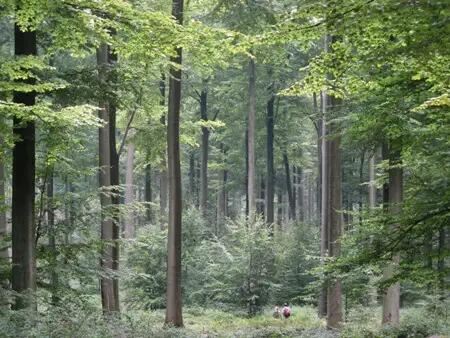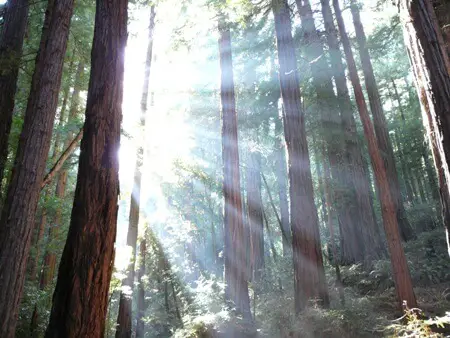Have you ever taken a long walk through the woods on a beautify day? The air may be fragrant with the sunlight hitting pine sap and there’s a “green” smell in the air.
It’s hard to describe, but the forest or woods can be wonderful places to relax. But wait a minute! Is there a difference between the terms “forest” and “woods”?
Fun fact: A forest is still a forest if it is legally declared as such, even if there is not a single tree in sight. Ever wondered how a forest can be different from the woods? Are these terms synonymous or is one a variation of the other? Read on to find out.
History of the Words “Wood” and “Forest”
At one point in history, the words “forest” and “wood” meant the same thing. However, over time, their meanings have changed.
Our English language is an amalgamated (combination) language. That means the words in our language have come from other languages. English has incorporated words from the Anglo-Saxon, Danish, Dutch, French, and other languages. This has led to confusion between the meanings of the words “woods” and “forest.”
When the Normans invaded England, they brought their French language with them. Once England had been conquered, the French language intermingled with the Old English language. Words that meant the same thing in both languages were changed to mean something different. This was the case with the words “beef” and “cow.” Both words meant “cow;” however, “beef” eventually came to refer to the meat of the cow.
“Wood” was a Germanic word that came from the word “wode,” which was from Middle English. This word meant a group of trees or a tree. However, these days, “wood” usually means the stuff found inside trees, though it can mean a small grouping of trees.
“Forest” is a French word that meant a pine or fir tree. Today, the word refers to a large collection of trees.
Now, you can see how the history of the words “woods” and “forest” affects how the words are used in modern English!
Summary Table
| Forest | Woodland |
| Covers a wider land area. | Covers a smaller land area. |
| High tree population. | Low tree population. |
| Large percentage of canopy cover. | Small area covered by canopy |
Definitions

A forest is a large piece of land heavily populated by trees. There are about 800 hundred definitions out there, taking into account factors such as tree populations, tree heights, and ecological function, just to name a few. The Food and Agriculture Organization defines forests as having covered almost 31 percent of our planet’s land area in 2015 – that’s about 15.5 million square miles or roughly 4 billion hectares.
Forests are the largest land ecosystem of the planet and are found all over the world. They are the largest contributors of the planet’s biosphere. Forests also contain 80 percent of the world’s plant biomass.
There are different kinds of forests, and depending on the location, forests are grouped into boreal forests (near the poles), tropical forests (near the equator), and temperate forests (mid-latitude).
Humans and forests affect each other both positively and negatively. Forests are ecosystems critical to human population, as trees and plants convert carbon dioxide to biomass and breathable air, regulate the climate, purify water, and even shield against strong winds and floods.
According to some researchers, forests can cause negative effects too. Protected forests can be expensive to maintain and may reduce the fertility of the land. Forests are also known to be sources of many diseases that can affect humans and livestock.

Woods, commonly referred to as woodlands, are forests with a lower density of trees. This low tree population allows the formation of open habitats that enjoy limited shade and plenty of sunlight. These conditions promote the growth of shrubs, plants without a wood stem. Drier conditions can transform woodlands into shrublands.
The British woodland management system classifies woodlands as tree-covered lands that came up naturally and are now run and managed. The term woodlot is more of an American term which refers to trees usually used as firewood.
Forest vs Woods
While woodland is a “small” forest, the biggest difference between a forest and woodland lies in the density of trees found in each and the size of the area they cover. A forest covers a big land area with a high population of trees, while woodland has a much lower concentration of trees and a smaller land area.
A forest can also be defined by the mass of entwined branches, twigs, and leaves of mature trees (i.e., canopy). Forests have higher levels of canopy cover compared to woodlands.
A forest has an understory of shrubs, bushes, and younger trees well adapted to living under the shades of the canopy, while woodland may have grasses, shrubs, and plants inhabiting its understory.





